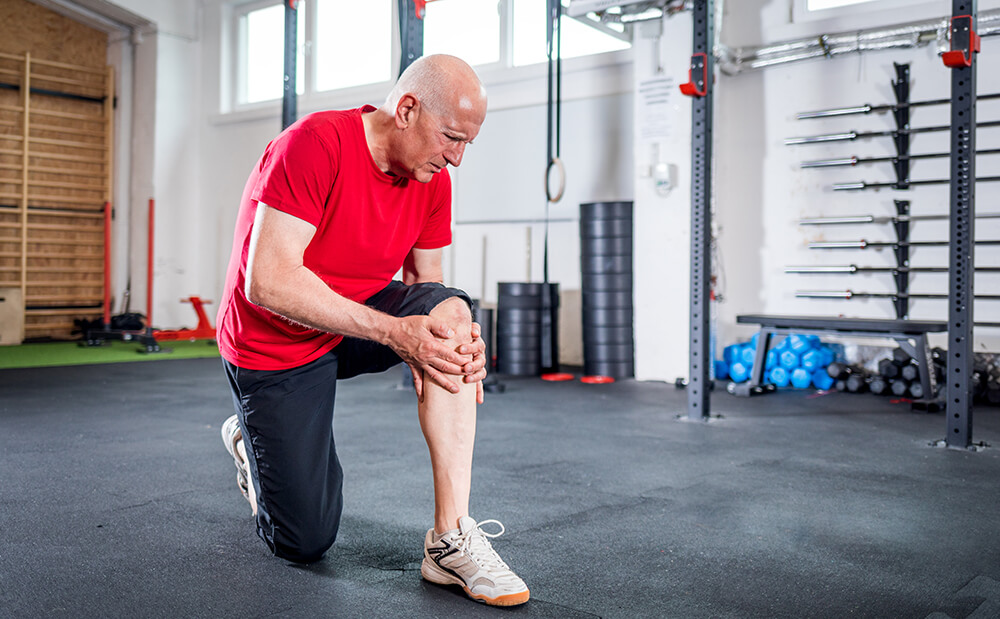It’s estimated that around 4 million people in the U.S. have undergone knee replacements. Of this population who receive knee replacements, it’s estimated that 1 in 20 people will experience minor complications. Of the several complications that may result from a knee replacement, one of them is lower leg pain.
To learn how you can manage lower leg pain after a knee replacement surgery, the causes of lower leg pain, and what treatments may work best, keep reading below.
What are some of the potential reasons someone might undergo a knee replacement?
- Osteoarthritis — One of the most common causes of knee replacements is osteoarthritis. This condition involves joints degenerating over time and causing changes to bone structure. It may cause persistent pain in those it affects. Osteoarthritis usually affects the joints in the body where the hands, hips and knees are.
- Rheumatoid arthritis — Rheumatoid arthritis is another common cause of knee replacements. This type of arthritis occurs when the immune system attacks the joints and causes inflammation. This condition can cause significant pain in the joints of the knee.
- Traumatic physical injury — Traumatic physical injuries can also lead to knee replacements in extreme cases. These include injuries like those caused by vehicular accidents or sports games.
Why might someone experience lower leg pain after knee replacement?
- Inflammation and swelling — Lower leg pain after a knee replacement might be caused by excessive inflammation and swelling. Inflammation can be expected after any injury or surgical procedure. But in cases where inflammation becomes chronic, excessive, or spreads to the leg, lower leg pain after a knee replacement is a good possibility.
- Nerve damage — Another reason someone may experience lower leg pain after a knee replacement is because of nerve damage. Nerve damage is a complication of surgical procedures. It usually results when a nerve is injured or compressed. A damaged nerve can cause pain, tingling and numbness; this can occur even in areas separate from the knee, such as the lower leg.
- Infection — Infections can cause pain in the lower leg after a knee replacement when an infection that starts in the knee spreads to the leg.
How can you manage lower leg pain after knee replacement?
- Physical therapy — Physical therapy is an effective method for treating a variety of conditions. Some of these include arthritis, knee pain, leg pain, and pain that results after a procedure. Physical therapists are trained to recognize conditions based on your symptoms. They can provide consistent and effective treatment for your unique condition. If you’re dealing with arthritis that limits your mobility, a physical therapist can help reduce stiffness and teach you how to manage your pain. If you’re dealing with leg pain caused by a knee procedure, your physical therapist can help you reduce inflammation and build strength in your lower limbs.
- RICE method — The RICE method (rest, ice, compression and elevation) can be used to reduce swelling and inflammation and boost circulation in the limbs. If your leg pain after your knee surgery is caused by inflammation, the RICE method may help you reduce it.
- Pain-relieving medication — Pain-relieving medication can help reduce lower leg pain after a knee replacement. Certain medications can lower inflammation and pain, which may benefit your lower leg.
- Corticosteroid injections — Corticosteroid injections may help lower leg pain after a knee replacement if the cause of the pain is related to inflammation. Steroid injections can help reduce inflammation and pain, although they may require multiple sessions.
Continuum Wellness can provide you with relief after your knee replacement
Are you still not sure how a physical therapist can help you after your knee replacement? Do you have any other questions or concerns you’d like to ask about, but you’re not sure if physical therapy is the best way to treat your specific health needs?
At Continuum Wellness, our compassionate and skilled physical therapists are specially trained to help diagnose and address issues that may be causing your lower leg pain after your knee replacement. If you’re concerned about your pain, you should consider taking a look at several of our resources and specialties. We offer free screenings to answer your questions, discuss options for treatment and aid in your journey toward better health! We also offer at-home treatment as well as virtual treatment to best fit your needs.
Contact our team today for more information or to schedule an initial appointment.

